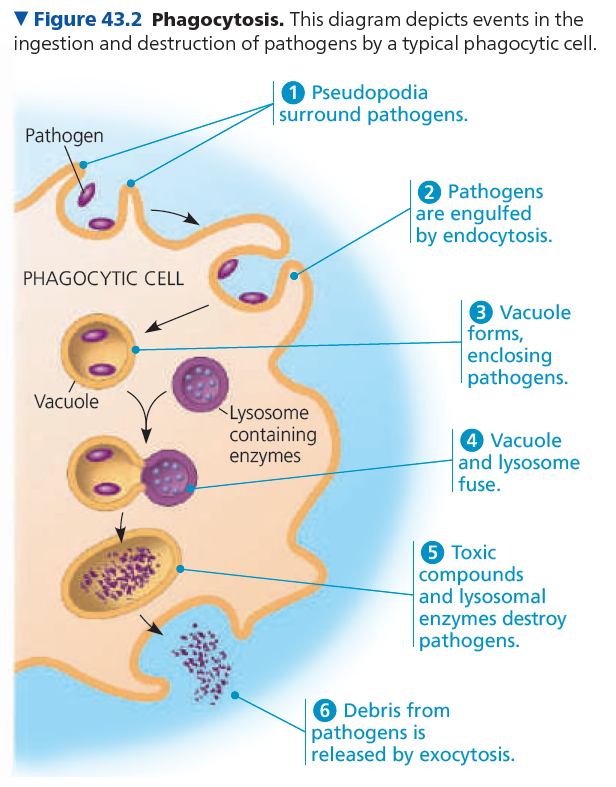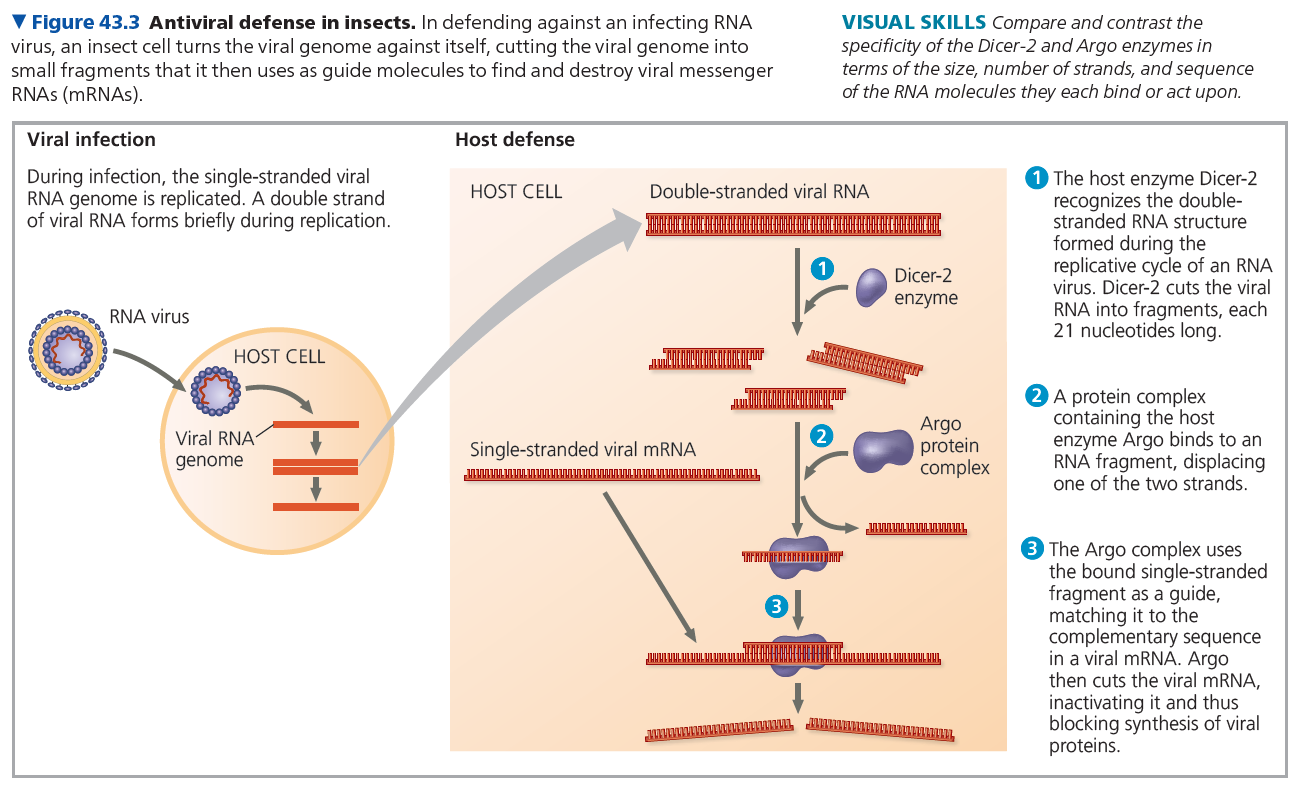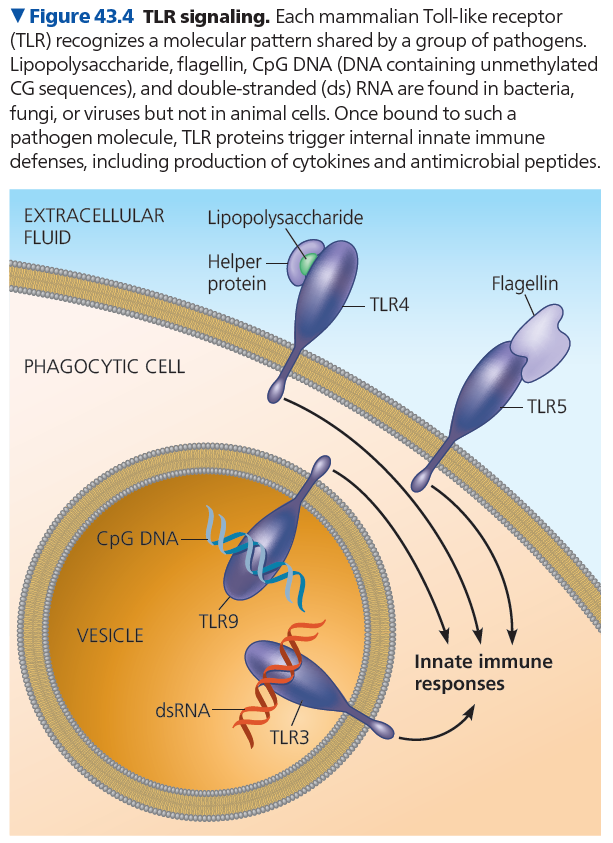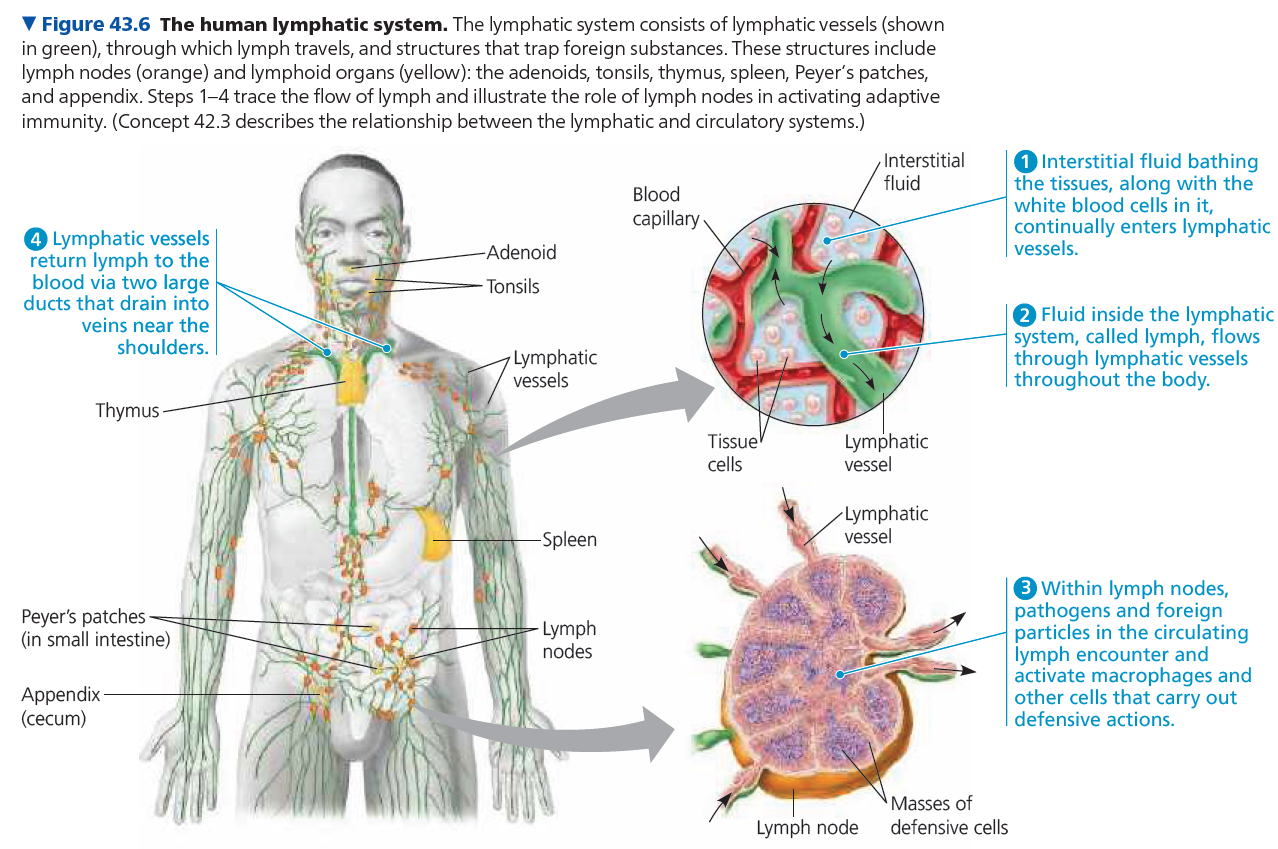The Immune System Introduction
The immune system's primary function is to defend the body from pathogens, or invading disease causing agents. Pathogens can include bacteria, fungus, and viruses. The immune system has two primary ways to defend itself: the innate immune system and the adaptive immune system.
Innate Immune System in Invertebrates
The first line of defense prevents the pathogens from entering the body. Skin and shells are an example of this. However, the body cannot seal itself off completely as it needs to be able to breathe and eat. To combat pathogens in the body's entrances, such as the digestive tract and various airways, the body produces secretions that can trap or kill pathogens. If the pathogen still manages to make its way into the body, the immune system attempts to detect the pathogen and destroy it.
Invertebrates only have innate immunity. Their barrier defenses include the exoskeleton, which is primarily composed of chitin (a polysaccharide). Insects also have a digestive system enzyme called lysozyme that can break down bacterial cell walls.
The insect's innate immune system can also produce recognition proteins, which bind to molecules that are common to many pathogens. In this way, the innate immune system is nonspecific. Insects also have major immune cells called hemocytes. Some hemocytes are phagocytic cells and perform a process called phagocytosis. In phagocytosis, the hemocyte envelops a pathogen and then destroys it internally.

Other hemocytes release antimicrobial peptides, which can inactivate or kill bacteria and fungi by disintegrating their plasma membranes.
Insects can also detect the presence of double stranded RNA, which only viruses utilize. This prompts the insect's immune system to destroy the dsRNA.

Innate Immune System in Vertebrates
Vertebrates have both innate immunity and adaptive immunity, but first we will be focusing on their innate immunity. Similar to insects, mammals also have barrier defenses like mucous membranes and the skin. Saliva, tears, and mucous secretions can 'wash' epithelia and inhibit colonization. Body secretions are also hostile to various pathogens. Lysozyme destroys cell walls of bacteria and the stomach contains an acidic environment with pH 2.
Mammals also have unique immune receptors such as the Toll-like receptor (TLR) that binds to parts of pathogens. Once the pathogens are bound, the TLR triggers the secretion of cytokines and antimicrobial peptides that assist the immune response.

In addition, mammals have phagocytic cells such as neutrophils and macrophages. There are 4 more specialized cell types:
- Dendritic cells populate tissues such as skin that contact the environment. They stimulate adaptive immunity.
- Eosinophils are underneath the epithelium and release destructive enzymes once parasites are encountered.
- Natural killer cells are like security guards and look out for virus-infected cells. They do not engulf the infected cells but instead release chemicals that lead to cell death.
- Mast cells are in connective tissue and stimulate the inflammatory response.
Inflammatory responses are a set of events that are triggered by signaling molecules. They usually begin after cytokines are released. Mast cells release a signaling molecule called histamine at the damaged sites. This triggers the blood vessels to dilate (expand) and become more permeable, leading to an increase in skin temperature a red color. There is an accumulation of pus, a combination of dead white blood cells, dead pathogens, and debris from damaged tissue.
The lymphatic system is composed of lymph nodes, which contain macrophages that engulf pathogens.

Septic shock is when bacterial infections induce life threatening inflammatory responses. A rapid increase in blood flow and decrease in blood pressure can be fatal. Crohn's disease is an example of an unregulated inflammatory response that disrupts intestinal function.
Interferons are proteins that interfere with viral infections. When a cell is infected with a virus, it releases interferons. The presence of interferons indicates nearby cells that viruses are present. This reduces the spreading of viruses from cell-to-cell.
The complement system results in the lysing of infected cells. It is made up of 30 blood plasma proteins.
Although the human immune system has developed complicated and thorough measures to defend itself from pathogens, pathogens still continue to attempt to hijack our bodies. In fact, some pathogens attempt to evade or resist the immune system. One such virus, Streptococcus pneumoniae, which plays a major role in pneumonia, interferes with pathogen recognition and phagocytosis. Some types of bacteria also resist breakdown in phagocytic cells!
